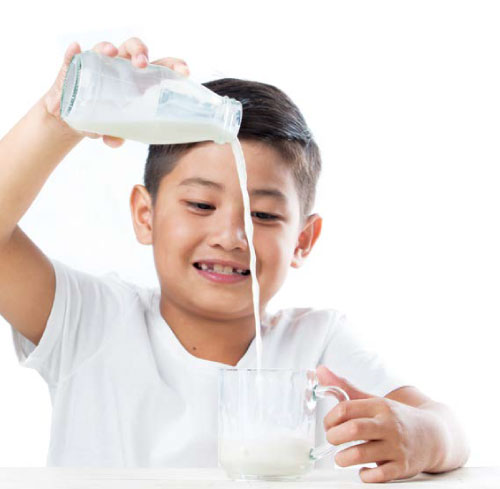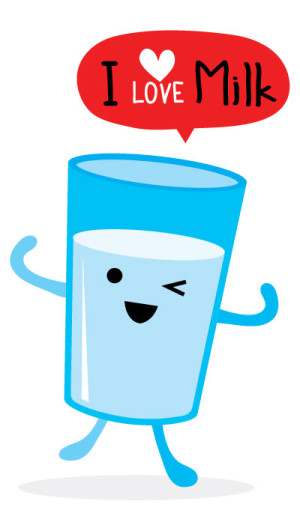Milk and milk products are an excellent source of many essential nutrients that are critical for the proper growth and development of your child. In addition to providing him with energy, milk is a nutrient-dense food that contains essential nutrients such as calcium, protein, and vitamins A, D, and B2 (riboflavin).
However, several studies in Malaysia have revealed that the diets of children and adolescents are lacking the intake of milk products. As children grow, they have a tendency to decrease their milk consumption. Unfortunately, this trend is also matched by an increase in their intake of less nutritious beverages (e.g. carbonated drinks, cordial, fruit drinks, etc.). This trend is worrisome in the wake of known problems such as childhood obesity and malnutrition (e.g. insufficient intake of essential nutrients or an overabundance of sugar).
On average, they consume less than two servings of milk a day, (1 serving = 1 glass), which is below the recommendation of the Malaysian Dietary Guidelines (MDG, published by the Ministry of Health). The MDG recommends a daily consumption of between two to three servings.
Thus, it is a good idea to encourage your child to consume the recommended amount of milk and milk products. By establishing a habit of drinking milk early, this would help ensure that he will continue to do so as an adult.
Milk in the mornings
As the saying goes, breakfast is the most important meal of the day. This is supported by the results of the recently concluded MyBreakfast Study of School Children: Findings, Implications & Solutions; a study by the Nutrition Society of Malaysia (NSM) which uncovered some worrying facts:
- 1 in 4 children skip breakfast at least 3 times in a week,
- breakfast skippers were 1.34 times more likely to be overweight,
- less than half of the children surveyed (29.9% of girls and 41.3% of boys) achieved at least 80% of their recommended nutrient intake (RNI) for calcium.
By including milk as part of his breakfast, you can ensure that your child reaps the benefits. Since milk can be packed to go, it is certainly a convenient option for breakfast. Alternatively, it can be combined with other foods in order to provide him with the energy and nutrients he needs.
This will make it easier for him to achieve his recommended nutrient intake. As an added bonus, meeting the his daily nutrient requirements will also help him to unlock his full academic potential, as he will be able to pay better attention during class and concentrate better in school.
Serving milk
There are many ways to encourage your child to drink more milk, such as:
- serve it cold – chill your child’s milk in the refrigerator or add in a few ice cubes before serving.
- milk shakes – use chilled milk and blend it in a blender/food processor with some ice. Get creative and add fruits or even chocolate powder.
- use milk when cooking – you can add milk to your recipes, e.g. add milk to cookies, puddings, milk shake, smoothies, mushroom/chicken soups to make it creamy. You can even make a scrambled egg by adding a more milk to the egg before scrambling it. Another option for recipes that call for coconut milk (santan) is to simply replace it with milk.
- when making drinks at home, don’t use sweetened condensed milk – use fresh, UHT or powdered.
- if your child is lactose intolerant, you can make milk and other milk products more tolerable for his consumption. Offer him small amounts of milk instead or better still, lactose-free dairy products. Alternatively, you can provide him with fermented milk products instead, e.g. yoghurt, cheese, yoghurt drink or serve him milk in small quantities (approximately ½ cup) at intervals throughout the day.
- flavoured milk is an acceptable option if it will get him to consume more milk.
An educational collaboration with Nutrition Society of Malaysia.










Comments